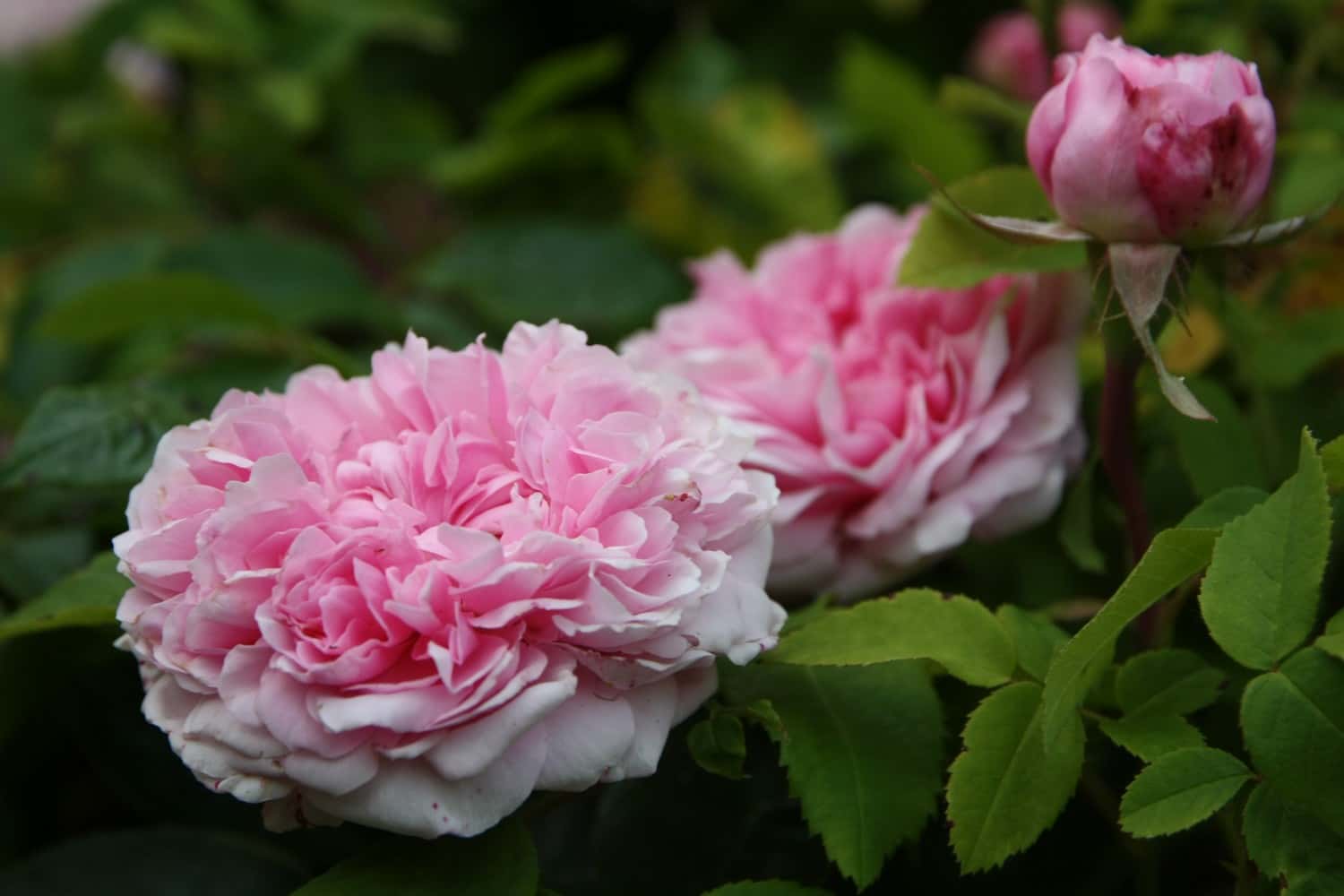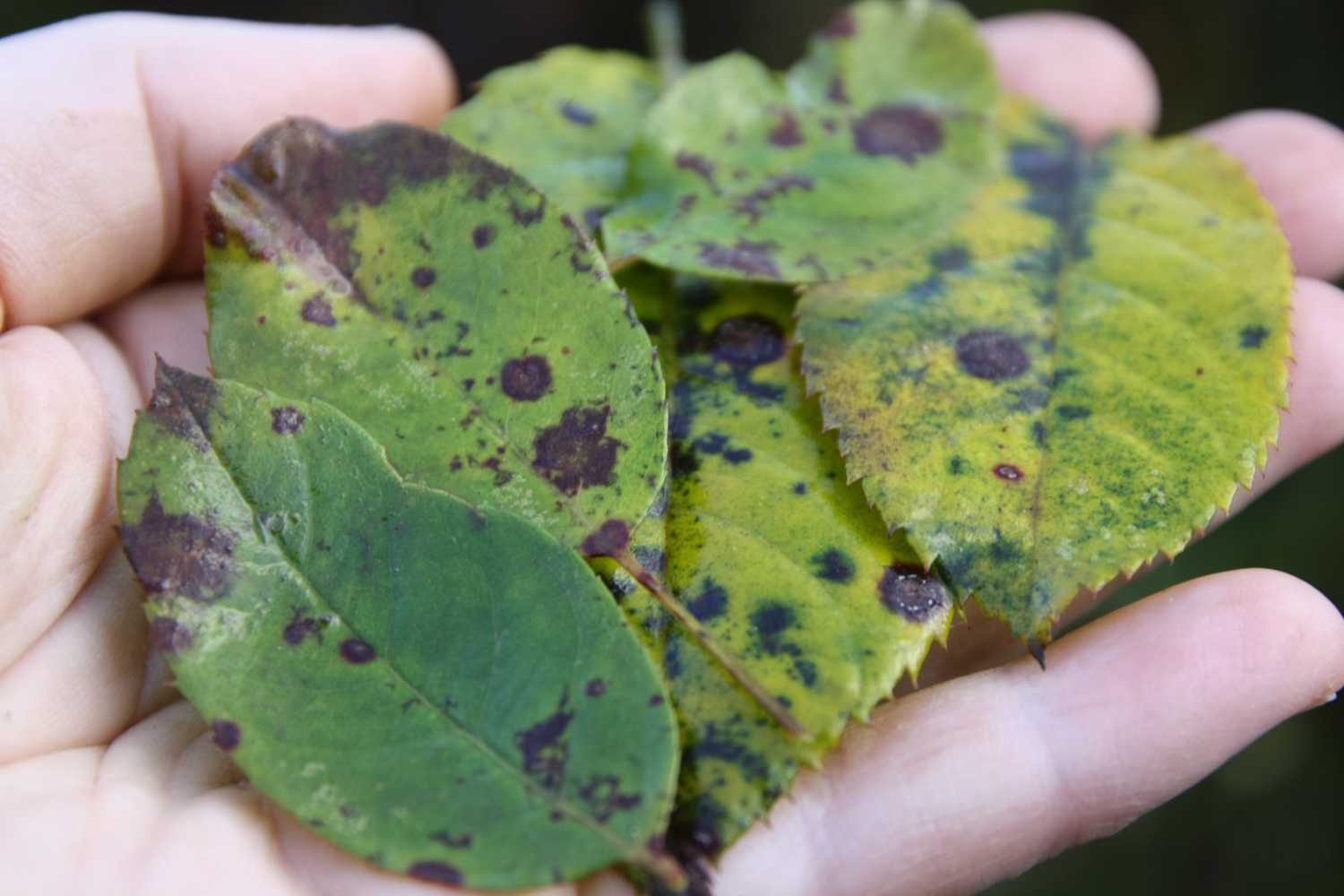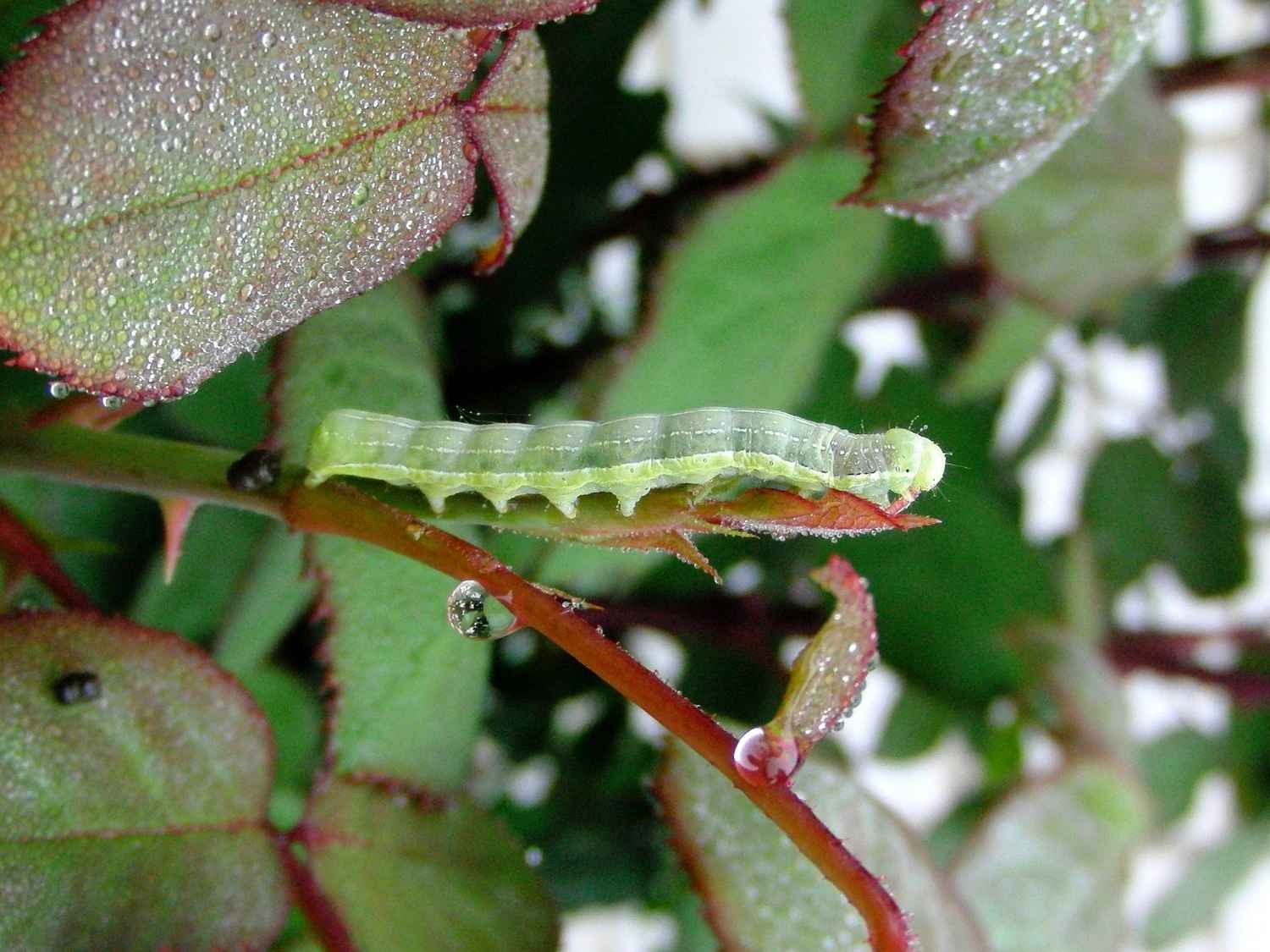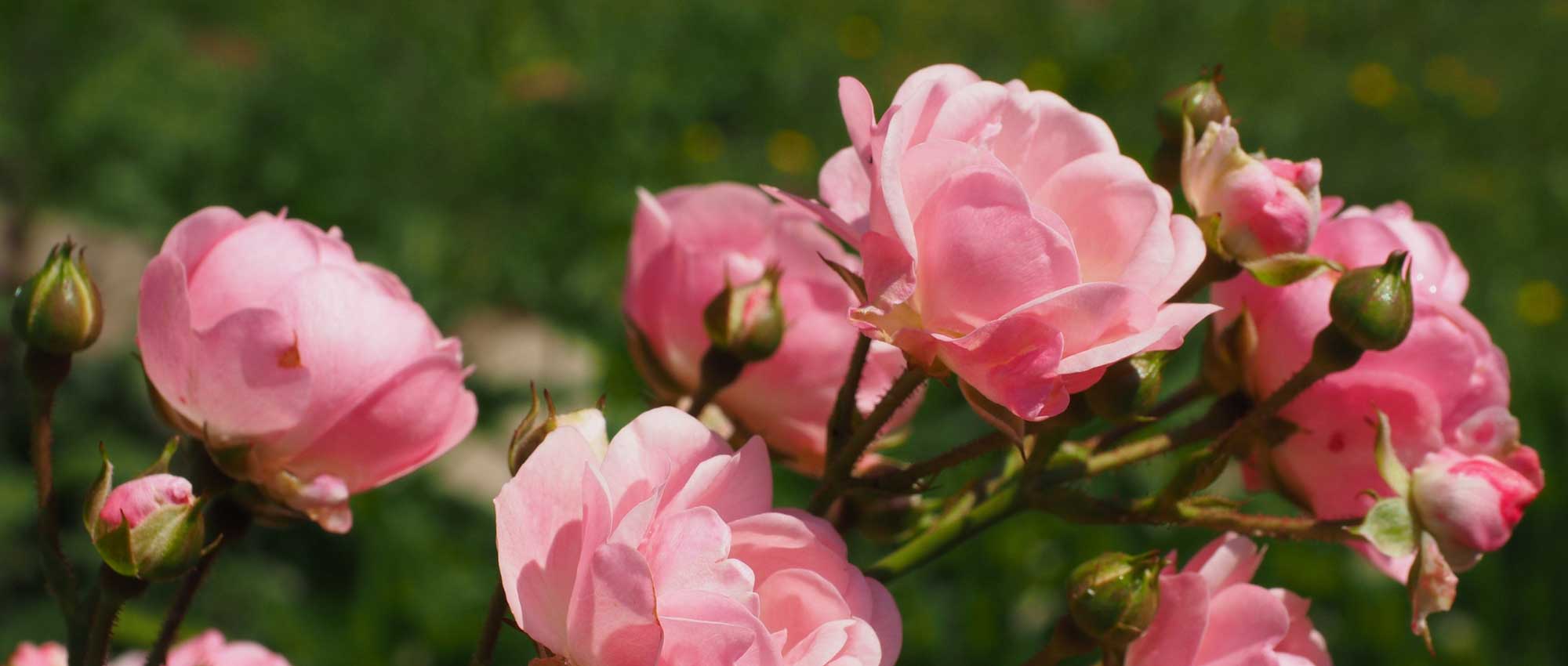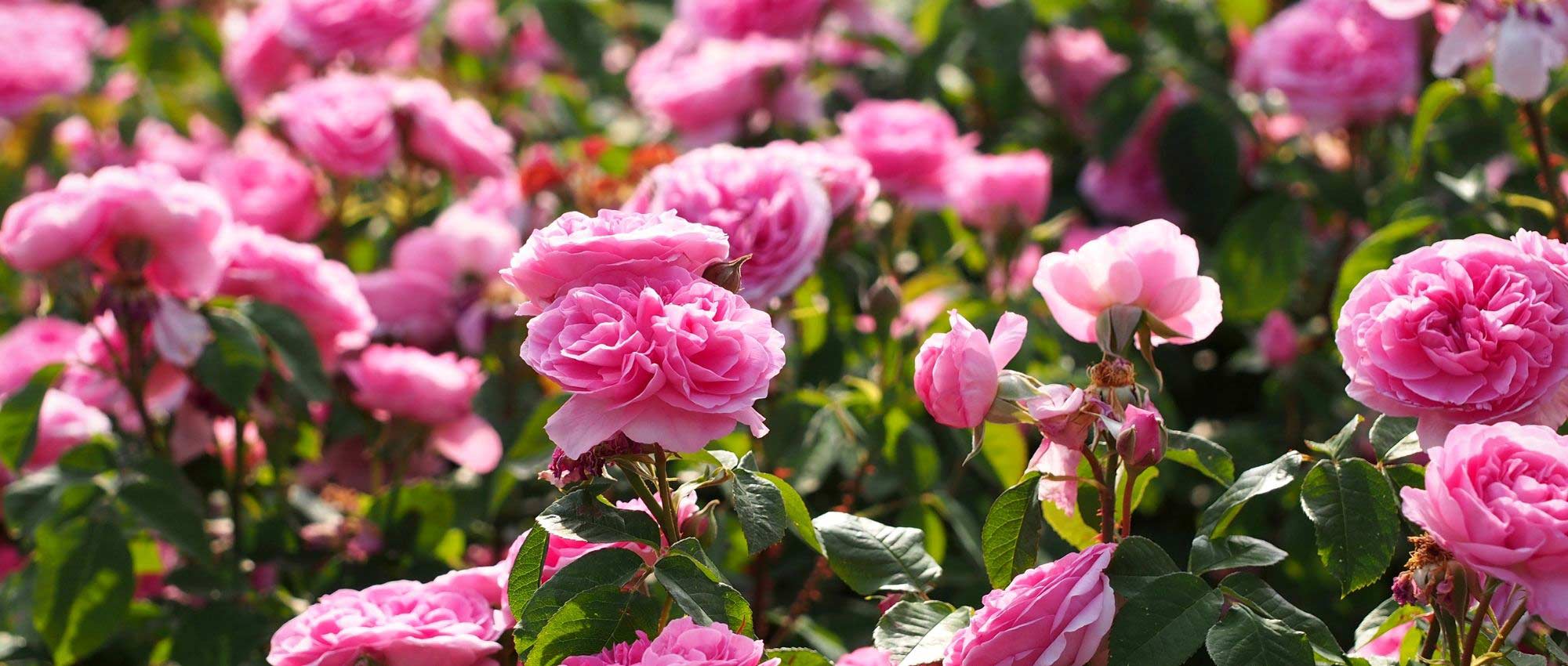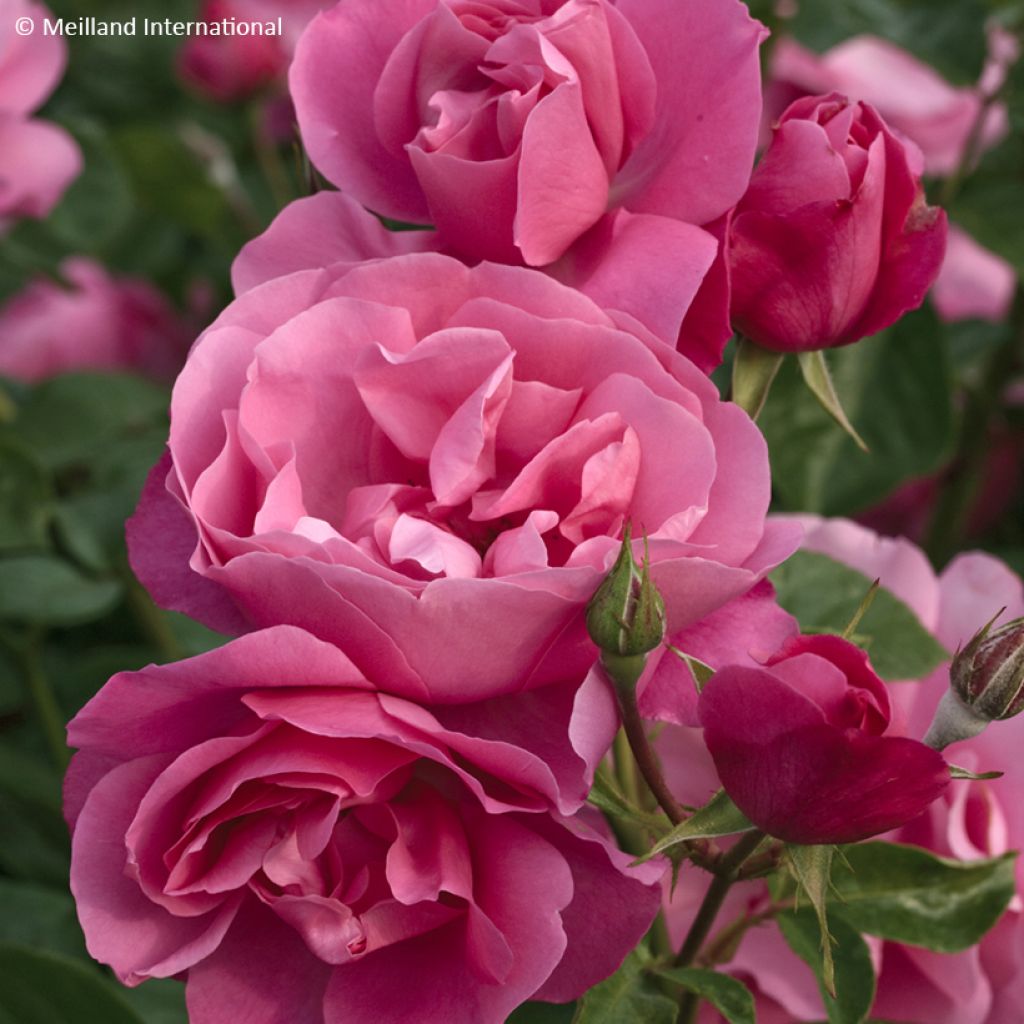

Rosa Déborah Meillandecor - - Groundcover Rose
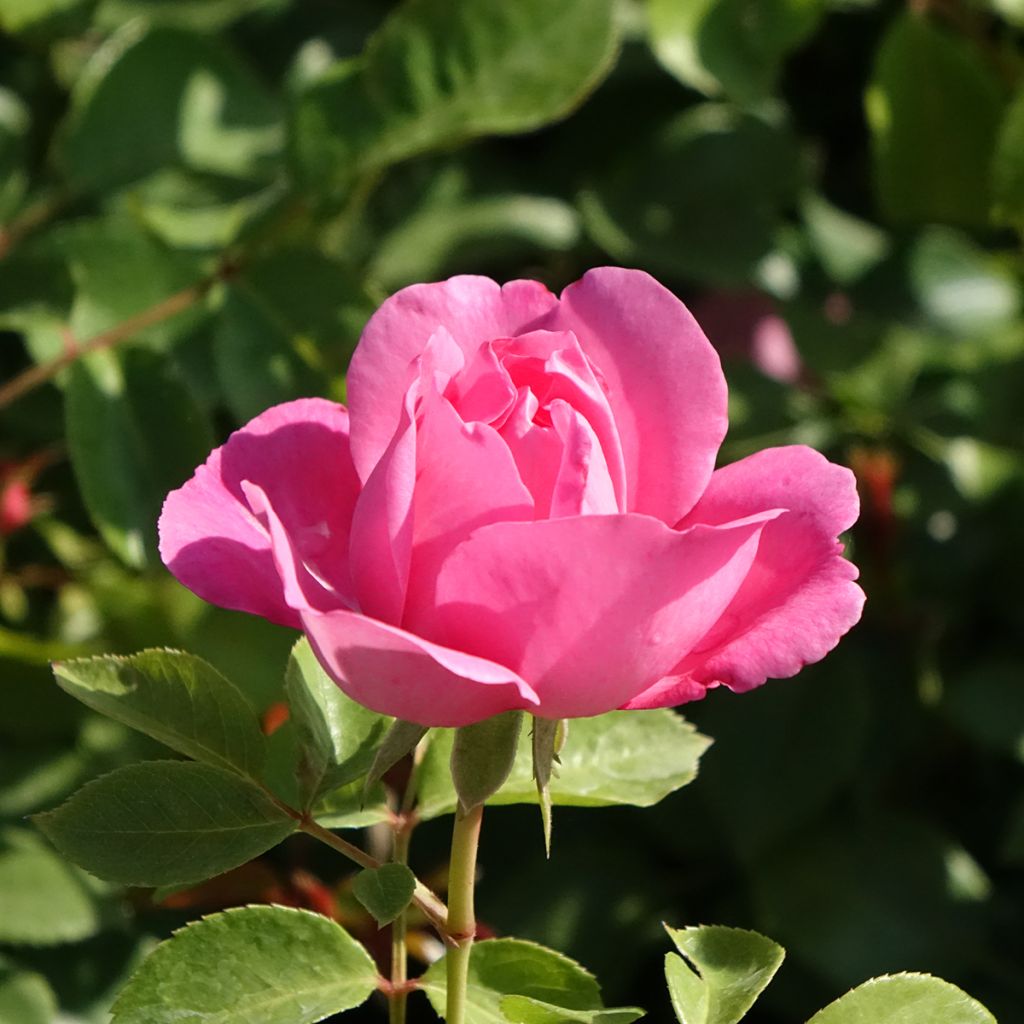

Rosa Déborah Meillandecor - - Groundcover Rose
Rosa Déborah Meillandecor - - Groundcover Rose
Rosa 'Meinoiral' DEBORAH MEILLANDECOR®
Groundcover Rose
Special offer!
Receive a €20 voucher for any order over €90 (excluding delivery costs, credit notes, and plastic-free options)!
1- Add your favorite plants to your cart.
2- Once you have reached €90, confirm your order (you can even choose the delivery date!).
3- As soon as your order is shipped, you will receive an email containing your voucher code, valid for 3 months (90 days).
Your voucher is unique and can only be used once, for any order with a minimum value of €20, excluding delivery costs.
Can be combined with other current offers, non-divisible and non-refundable.
Home or relay delivery (depending on size and destination)
Schedule delivery date,
and select date in basket
We guarantee the quality of our plants for a full growing cycle, and will replace at our expense any plant that fails to recover under normal climatic and planting conditions.


Description
The Deborah Meillandecor® Shrub Rose is an ADR® certified landscape rose renowned for its abundant flowering in an elegant pink shade. Its broad, bushy habit makes it an excellent choice for structuring flowerbeds, lining pathways, or adorning slopes. Its double flowers reveal a luminous pink hue leaning towards cyclamen pink - a unique and fresh tone. Flowering begins in June and continues uninterrupted until October. Its glossy dark green foliage is highly disease-resistant. By late summer, it produces large decorative orange fruits, enhancing its ornamental appeal until winter. Ideal for both ground and container growing, it will perfectly suit landscapes requiring robust, decorative vegetation with minimal maintenance.
The Deborah Meillandecor 'Meinoiral' Rose also known as Deborah Meidiland or PLAY ROSE belongs to the Rosaceae family and is characterised by its balanced growth and generous, spreading silhouette. At maturity, it reaches approximately 60 to 80 cm in height and 100 to 120 cm in width, forming a lush, well-branched bush. Its flexible, slightly arching stems support dense, deciduous foliage with glossy dark green leaves that remain healthy throughout the season thanks to their excellent resistance to common diseases like black spot and powdery mildew. Measuring around 8 cm in diameter and comprising about thirty petals, its double flowers display a luminous slightly cyclamen-pink shade which gently evolves depending on light intensity and temperatures. They appear in generous clusters covering the foliage from June until October in successive waves, offering prolonged flowering that ensures a colourful presence in the garden for an extended period. From September onwards, the bush produces an abundance of decorative orange fruits which serve as a food source for garden birds.
The ADR® label is awarded by the German Rose Federation. The ADR® designation is only granted to varieties that have met the strictest criteria in the world. Plants are tested simultaneously at 10 different locations under various soil and climate conditions over several years. The tests focus on hardiness, perennial character, and flowering, with no pesticides used.
Rosa Déborah Meillandecor - - Groundcover Rose in pictures
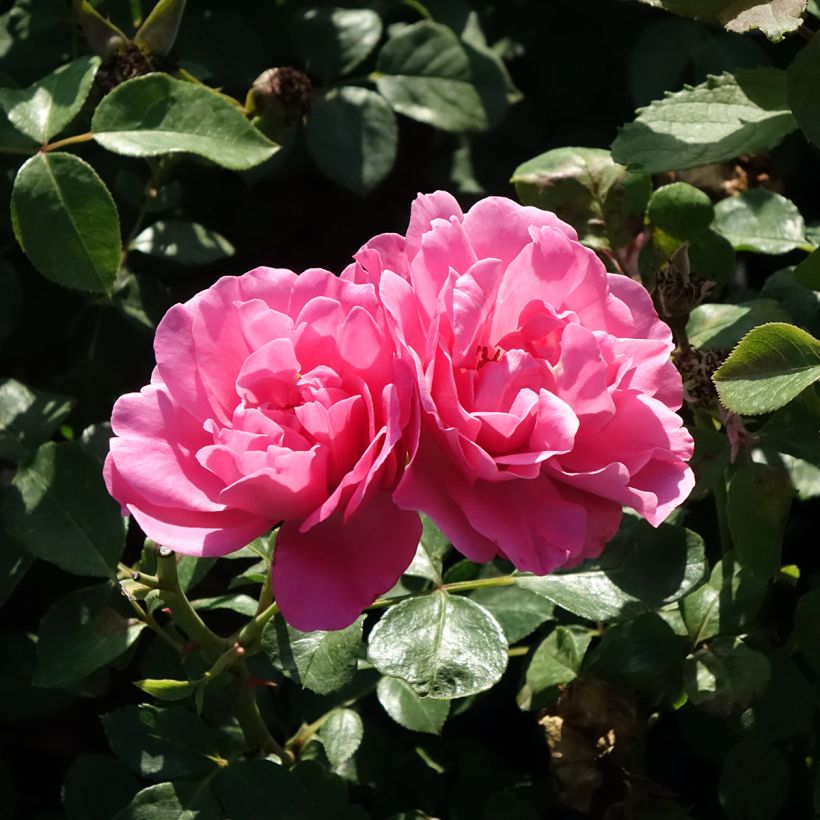

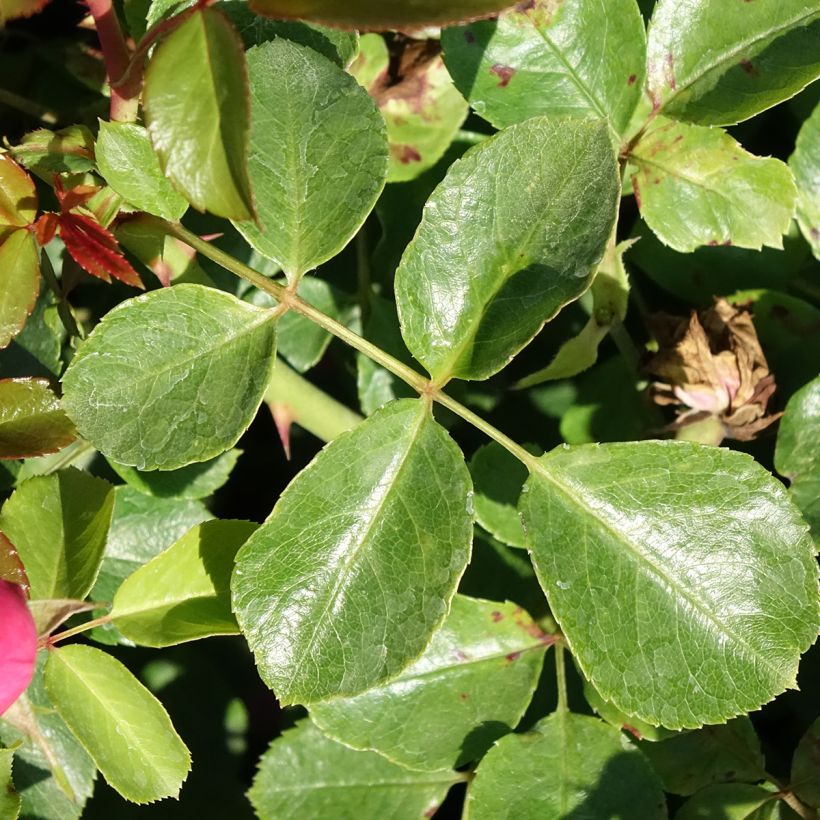

Plant habit
Flowering
Foliage
Botanical data
Rosa
'Meinoiral' DEBORAH MEILLANDECOR®
Rosaceae
Groundcover Rose
Rosa 'Meinoiral' PLAY ROSE
Cultivar or hybrid
Planting and care
Deborah Meillandecor groundcover roses prefer a sunny position (at least 4 hours of sunlight per day), but sheltered from the scorching midday sun and strong winds. They thrive in loose, well-drained, humus-rich soil. They prefer slightly acidic soil but will adapt to any garden as long as the ground is well-prepared and sufficiently fertile. To plant your rose in a pot, work the soil to a depth of 25 cm, breaking it up finely, and add a base amendment such as dried blood or dehydrated horn meal at the bottom of the planting hole. Place your plant freed from its pot, covering the top of the root ball with 3 cm of soil, backfill, and water thoroughly to eliminate any air pockets. During dry weather, water regularly for a few weeks to encourage root establishment. Also, remember to feed your rose with a special rose fertiliser to promote flowering.
Roses often develop spots or look unsightly by late summer, but this does not affect their growth. These spots are not harmful to the plant—it's a natural phenomenon. Follow all our advice to address this issue and read our article: Help! My Roses Have Spots
Planting period
Intended location
Care
Planting & care advice
This item has not been reviewed yet - be the first to leave a review about it.
Haven't found what you were looking for?
Hardiness is the lowest winter temperature a plant can endure without suffering serious damage or even dying. However, hardiness is affected by location (a sheltered area, such as a patio), protection (winter cover) and soil type (hardiness is improved by well-drained soil).

Photo Sharing Terms & Conditions
In order to encourage gardeners to interact and share their experiences, Promesse de fleurs offers various media enabling content to be uploaded onto its Site - in particular via the ‘Photo sharing’ module.
The User agrees to refrain from:
- Posting any content that is illegal, prejudicial, insulting, racist, inciteful to hatred, revisionist, contrary to public decency, that infringes on privacy or on the privacy rights of third parties, in particular the publicity rights of persons and goods, intellectual property rights, or the right to privacy.
- Submitting content on behalf of a third party;
- Impersonate the identity of a third party and/or publish any personal information about a third party;
In general, the User undertakes to refrain from any unethical behaviour.
All Content (in particular text, comments, files, images, photos, videos, creative works, etc.), which may be subject to property or intellectual property rights, image or other private rights, shall remain the property of the User, subject to the limited rights granted by the terms of the licence granted by Promesse de fleurs as stated below. Users are at liberty to publish or not to publish such Content on the Site, notably via the ‘Photo Sharing’ facility, and accept that this Content shall be made public and freely accessible, notably on the Internet.
Users further acknowledge, undertake to have ,and guarantee that they hold all necessary rights and permissions to publish such material on the Site, in particular with regard to the legislation in force pertaining to any privacy, property, intellectual property, image, or contractual rights, or rights of any other nature. By publishing such Content on the Site, Users acknowledge accepting full liability as publishers of the Content within the meaning of the law, and grant Promesse de fleurs, free of charge, an inclusive, worldwide licence for the said Content for the entire duration of its publication, including all reproduction, representation, up/downloading, displaying, performing, transmission, and storage rights.
Users also grant permission for their name to be linked to the Content and accept that this link may not always be made available.
By engaging in posting material, Users consent to their Content becoming automatically accessible on the Internet, in particular on other sites and/or blogs and/or web pages of the Promesse de fleurs site, including in particular social pages and the Promesse de fleurs catalogue.
Users may secure the removal of entrusted content free of charge by issuing a simple request via our contact form.
The flowering period indicated on our website applies to countries and regions located in USDA zone 8 (France, the United Kingdom, Ireland, the Netherlands, etc.)
It will vary according to where you live:
- In zones 9 to 10 (Italy, Spain, Greece, etc.), flowering will occur about 2 to 4 weeks earlier.
- In zones 6 to 7 (Germany, Poland, Slovenia, and lower mountainous regions), flowering will be delayed by 2 to 3 weeks.
- In zone 5 (Central Europe, Scandinavia), blooming will be delayed by 3 to 5 weeks.
In temperate climates, pruning of spring-flowering shrubs (forsythia, spireas, etc.) should be done just after flowering.
Pruning of summer-flowering shrubs (Indian Lilac, Perovskia, etc.) can be done in winter or spring.
In cold regions as well as with frost-sensitive plants, avoid pruning too early when severe frosts may still occur.
The planting period indicated on our website applies to countries and regions located in USDA zone 8 (France, United Kingdom, Ireland, Netherlands).
It will vary according to where you live:
- In Mediterranean zones (Marseille, Madrid, Milan, etc.), autumn and winter are the best planting periods.
- In continental zones (Strasbourg, Munich, Vienna, etc.), delay planting by 2 to 3 weeks in spring and bring it forward by 2 to 4 weeks in autumn.
- In mountainous regions (the Alps, Pyrenees, Carpathians, etc.), it is best to plant in late spring (May-June) or late summer (August-September).
The harvesting period indicated on our website applies to countries and regions in USDA zone 8 (France, England, Ireland, the Netherlands).
In colder areas (Scandinavia, Poland, Austria...) fruit and vegetable harvests are likely to be delayed by 3-4 weeks.
In warmer areas (Italy, Spain, Greece, etc.), harvesting will probably take place earlier, depending on weather conditions.
The sowing periods indicated on our website apply to countries and regions within USDA Zone 8 (France, UK, Ireland, Netherlands).
In colder areas (Scandinavia, Poland, Austria...), delay any outdoor sowing by 3-4 weeks, or sow under glass.
In warmer climes (Italy, Spain, Greece, etc.), bring outdoor sowing forward by a few weeks.

































